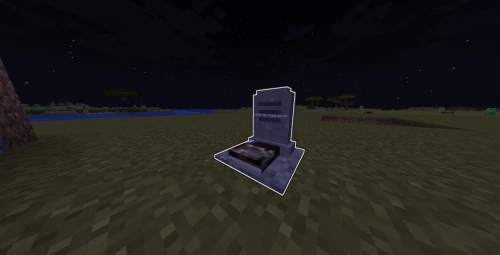Mods for Minecraft 1.18
Discover some of the wonderful mods for Minecraft version 1.18. These will make your Minecraft world even more fascinating to explore by adding a whole bunch of new functionalities, items, blocks and even new landscapes.
Caracal
Adds tamable caracals that hunt chickens and rabbits, found in savannas
Bossminium
Introduces formidable bosses with unique abilities and item drops for crafting offensive and defensive gear
Female Villagers
Adds female versions of villagers and other mobs for a more inclusive gameplay experience
Genetic Animals
Introduces genetic variations and unique animations to domesticated animals for enhanced realism and immersion
Nomadic Tents
Allows setting up portable tents like Yurts and Tepees, enabling easy relocation with all belongings intact
Fabric Language Kotlin
Language adapter for writing Fabric mods in Kotlin, enabling JVM and Kotlin-based modding.
TipTheScales
Replaces the default GUI scale button with a slider for smoother adjustment.
Visual Workbench
Adds hovering crafting visuals and requires manual item retrieval, compatible with multiple crafting tables and configurable settings
Puzzles Lib [Forge & Fabric]
Provides abstractions for cross-loader modding compatibility, facilitating ease in developing mods on Forge and Fabric platforms.
Skin Layers 3D (Fabric/Forge)
Transforms player skins into 3D models, enhancing visual detail with minimal impact on performance
TL skin and cape
Adds skin and cape customization using TLauncher integration for Minecraft, visible to others with the mod installed.
Serene Shrubbery
Transforms barren landscapes with vibrant flowers across all biomes, enhancing nature's beauty in the overworld gardens
LazyDFU
Improves startup performance by skipping unnecessary world conversion tasks using lightweight bytecode manipulation
You're in Grave Danger
Adds gravestones with abilities to store items, guide players back, and support mod integrations and customizations
Charm of Undying (Fabric/Forge/Quilt)
Allows using the Totem of Undying in a trinket slot instead of your offhand
Trinkets (Fabric)
Adds extra slots for alternate gear, allowing customization and enhancing gameplay on FabricMC without specific trinkets.
Unusual End
Enhances the End dimension with new mobs, biomes, and plants for a more adventurous experience
Better Villages
Enhances village aesthetics with new building styles, expanded structures, and biome-specific designs
BetterF3
Introduces a customizable and visually organized F3 screen with grouped colors and enhanced settings configuration options
MmmMmmMmmMmm (Target Dummy)
Features customizable target dummies that display damage numbers, can mimic mobs, and support armor equips or enchantment testing








































